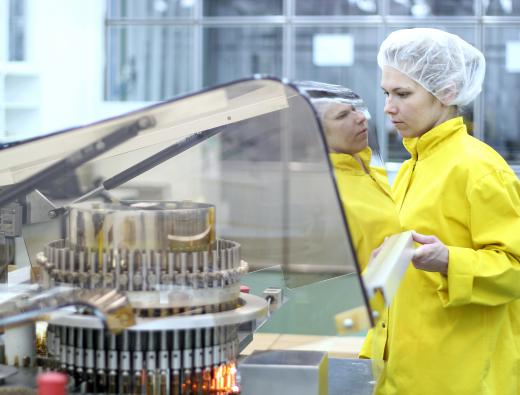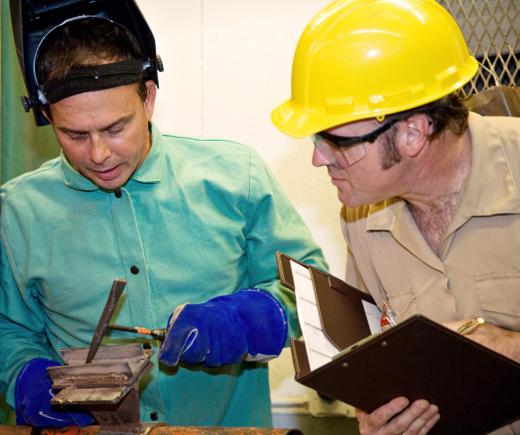At AboutMechanics, we're committed to delivering accurate, trustworthy information. Our expert-authored content is rigorously fact-checked and sourced from credible authorities. Discover how we uphold the highest standards in providing you with reliable knowledge.
What Is Involved in a Quality Control Analysis?
Quality control analysis involves planning, testing for defects, capturing data, and analyzing the results for improving the process in the future. The analyst uses of a variety of techniques to review defect data and to determine causes of defects. Software packages are frequently used to assist with capturing and analyzing quality control results.
A variety of organizations use quality control analysis. It is commonly used in software development, service delivery, and product manufacturing. Though the high level concepts are similar, details and methods of quality control analysis may vary for each specific organization’s needs.

Successful quality control analysis requires significant planning. Before conducting testing, the analyst should consider what to test and how to test. Employee training needs and how to identify, categorize, and document the test results should also be included in planning.
The analyst should plan to capture quality control data at key steps in the process. It is usually less expensive to find and correct defects earlier in the cycle, and the plan may account for that. In the case of software development, that can mean efforts to reduce defects in the requirements phase. For a manufacturer, that may mean testing incoming sub-components or raw materials for adherence to quality standards.

Other key parts of the process may occur between operations, particularly before a costlier operation. For example, a rubber molded parts manufacturer may mean sample batches of rubber compound after it has been mixed but before it is molded. If the batch of rubber compound is bad, it is less expensive to catch it at this point.
Employees will often need training to correctly identify and categorize various defects. They may also need to chart the defects they find. Statistical quality control software may be used for capturing and charting defect data.
Once the data is captured, a number of diagnostic techniques can be used to analyze it. Some common techniques include flowcharts, Pareto, and fishbone diagrams. Skillful use of these diagnostic techniques may identify factors that could be causing defects.
A technique that can be used to verify that a process is running within quality standards is Statistical Process Control (SPC). This technique checks that the process can meet the quality goals that have been established. It also factors in random variations that cannot be controlled.
Another quality control method acceptance sampling. In this technique, a statistically significant sample is tested. It is frequently used when manufacturers receive a large lot of sub-components and it is not cost-effective or reasonable to check the entire lot. A quality control analyst may determine how many samples need to be tested to verify the entire lot is likely to meet quality standards.
AS FEATURED ON:
AS FEATURED ON:












Discuss this Article
Post your comments